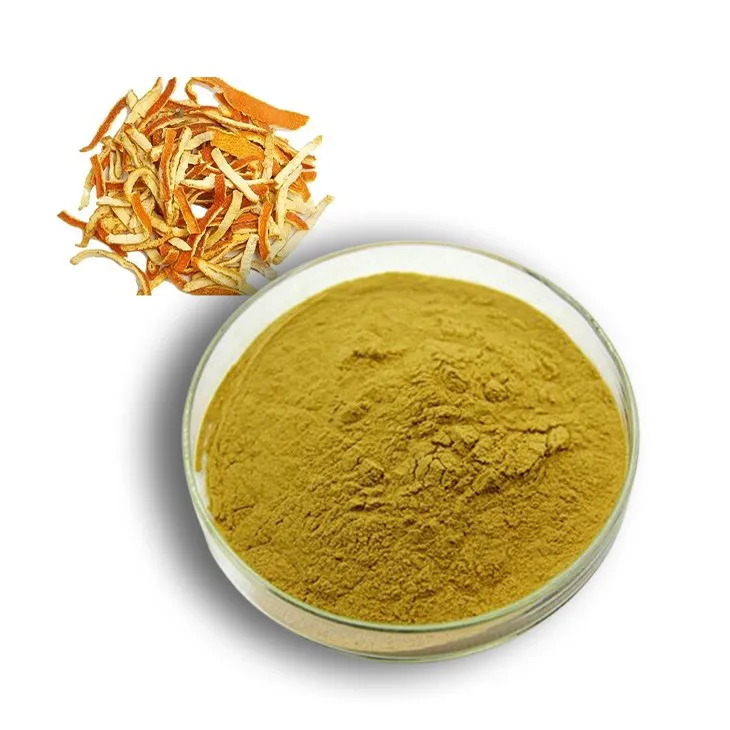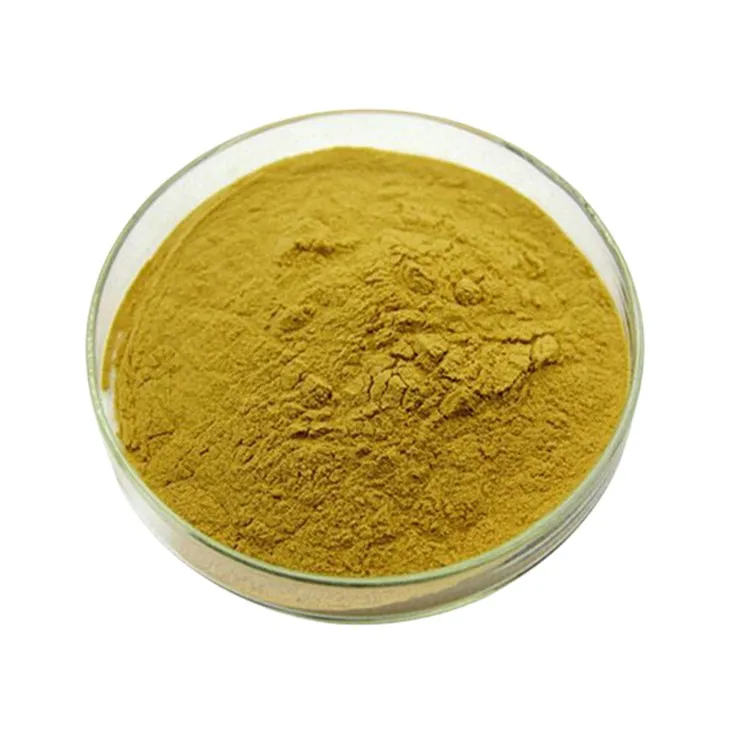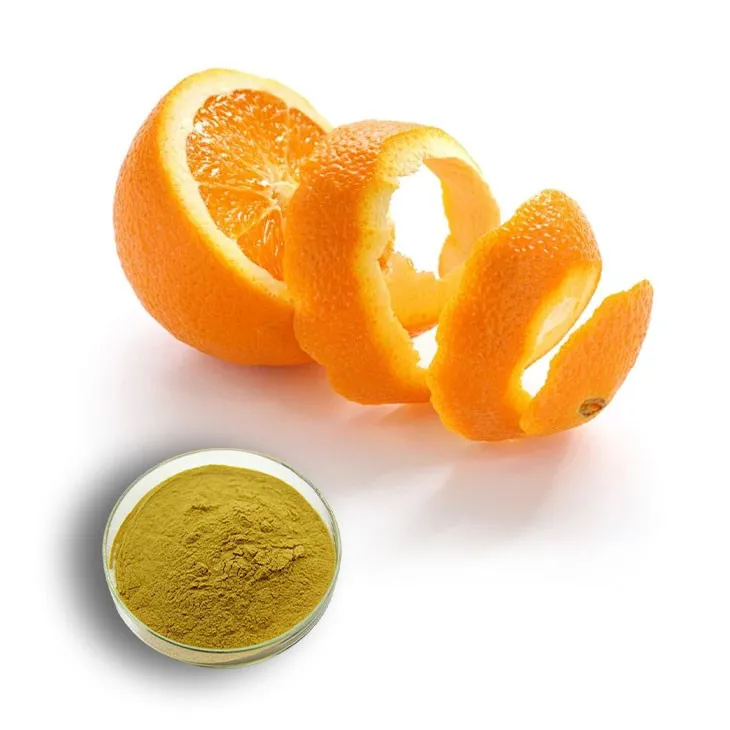- 0086-571-85302990
- sales@greenskybio.com
Optimal Bioavailability of Hesperidin.
2024-11-30

1. Introduction
Hesperidin is a flavanone glycoside that is abundantly present in citrus fruits such as oranges, lemons, and grapefruits. It has been associated with numerous health benefits, including antioxidant, anti - inflammatory, and cardioprotective properties. However, the bioavailability of Hesperidin is relatively low, which limits its full potential in promoting health. Understanding the factors that influence its bioavailability and developing strategies to enhance it are of great importance.

2. Factors Affecting Hesperidin Bioavailability
2.1 Solubility
Hesperidin has poor solubility in water, which is a major obstacle to its absorption in the gastrointestinal tract. In its native form, it is difficult for the body to uptake a sufficient amount of hesperidin. The low solubility can lead to incomplete dissolution in the digestive juices, reducing the amount of hesperidin available for absorption. To improve solubility, various techniques have been explored, such as nanoparticle formulation and complexation with other substances.
2.2 Gut Microbiota Interaction
The gut microbiota plays a crucial role in the bioavailability of hesperidin. These microorganisms can metabolize hesperidin into more bioactive forms. For example, certain bacteria can hydrolyze the glycosidic bond in hesperidin, releasing the aglycone form which is more easily absorbed. However, the composition and activity of the gut microbiota can vary among individuals. Factors such as diet, antibiotic use, and disease can influence the gut microbiota, thereby affecting hesperidin bioavailability. An imbalanced gut microbiota may lead to inefficient metabolism of hesperidin and reduced bioavailability.
2.3 Food Matrix
The presence of other components in the food matrix can either enhance or inhibit hesperidin bioavailability. In citrus fruits, hesperidin is often associated with other compounds such as pectin and cellulose. Pectin, for instance, can form complexes with hesperidin, potentially affecting its release and absorption. On the other hand, some components in the food may protect hesperidin from degradation in the gut, thus facilitating its absorption. Understanding the interaction between hesperidin and the food matrix is essential for optimizing its bioavailability.

3. Strategies to Enhance Hesperidin Bioavailability
3.1 Formulation Modifications
- Nanoparticle formulation: Encapsulating hesperidin in nanoparticles can improve its solubility and stability. Nanoparticles can protect hesperidin from degradation in the gastrointestinal tract and enhance its cellular uptake. For example, lipid - based nanoparticles have been shown to increase the bioavailability of hesperidin by improving its dissolution and interaction with intestinal cells.
- Complexation with other substances: Complexing hesperidin with cyclodextrins can enhance its solubility. Cyclodextrins can form inclusion complexes with hesperidin, increasing its water solubility and facilitating its absorption. This approach has been studied as a potential way to improve the bioavailability of hesperidin.
3.2 Dietary Considerations
- Consuming probiotics: Probiotics can help regulate the gut microbiota and improve the metabolism of hesperidin. By introducing beneficial bacteria into the gut, the hydrolysis of hesperidin can be enhanced, leading to increased bioavailability. For example, strains of Lactobacillus and Bifidobacterium have been shown to have positive effects on hesperidin metabolism.
- Pairing with certain foods: Pairing citrus fruits (rich in hesperidin) with foods that can enhance its absorption can be beneficial. For instance, consuming hesperidin - rich foods with healthy fats may improve its bioavailability. The fats can help in the solubilization and absorption of hesperidin in the gut.
3.3 Processing Techniques
- Fermentation: Fermentation of foods containing hesperidin can increase its bioavailability. During fermentation, the gut - microbiota - like microorganisms can metabolize hesperidin, converting it into more bioactive forms. Fermented citrus products may have higher levels of bioavailable hesperidin compared to non - fermented ones.
- Heat treatment: Appropriate heat treatment can also affect hesperidin bioavailability. Mild heat treatment may break down some of the complexes in the food matrix that inhibit hesperidin absorption, while excessive heat treatment may lead to degradation of hesperidin itself. Finding the optimal heat treatment conditions is crucial for maximizing its bioavailability.

4. Health Outcomes Associated with Enhanced Hesperidin Bioavailability
Enhancing the bioavailability of hesperidin can lead to improved health outcomes. With better absorption and utilization, hesperidin can exert more effective antioxidant and anti - inflammatory effects. This can be beneficial for reducing the risk of chronic diseases such as cardiovascular diseases, diabetes, and certain cancers. For example, in the context of cardiovascular health, improved bioavailability of hesperidin may lead to better regulation of blood pressure, cholesterol levels, and endothelial function.

5. Conclusion
In conclusion, hesperidin is a compound with great potential for promoting health, but its low bioavailability is a significant hurdle. By understanding the factors that influence its bioavailability, such as solubility, gut microbiota interaction, and food matrix effects, and implementing strategies like formulation modifications, dietary considerations, and processing techniques, we can enhance its bioavailability. This, in turn, can lead to better health outcomes. Future research should focus on further exploring these strategies and their long - term effects on human health, as well as on developing more personalized approaches to optimize hesperidin bioavailability based on individual factors such as gut microbiota composition and genetic variations.
FAQ:
What is hesperidin?
Hesperidin is a flavanone glycoside found mainly in citrus fruits. It has various potential health benefits, such as antioxidant, anti - inflammatory, and cardiovascular - protective properties.
Why is the bioavailability of hesperidin a challenge?
The bioavailability of hesperidin is challenged due to its low solubility in water and poor permeability across the intestinal membrane. These factors limit its absorption in the body, making it difficult to reach effective concentrations for exerting its full range of beneficial effects.
How does solubility affect the bioavailability of hesperidin?
Low solubility means that less hesperidin is available in a form that can be easily absorbed. Insoluble hesperidin may not be able to cross the intestinal barriers effectively. However, improving solubility, for example, through certain formulation techniques or combination with substances that enhance solubility, can increase the amount of hesperidin that is accessible for absorption, thereby enhancing its bioavailability.
What role does gut microbiota play in hesperidin bioavailability?
The gut microbiota can metabolize hesperidin into more bioactive forms. Some bacteria in the gut can break down hesperidin into smaller, more easily absorbable metabolites. A healthy and diverse gut microbiota is thus important for optimal hesperidin bioavailability as it can enhance the conversion and absorption of hesperidin in the body.
How can the food matrix influence hesperidin bioavailability?
The food matrix in which hesperidin is present can either enhance or hinder its bioavailability. For example, other components in citrus fruits may interact with hesperidin and affect its release and absorption. Fatty acids or other substances in the food can potentially improve the solubility or permeability of hesperidin, while some complex matrices may encapsulate hesperidin and prevent its efficient absorption.
What are some strategies to enhance hesperidin bioavailability?
Some strategies include nanoparticle - based formulations to improve solubility and permeability, co - administration with substances that can enhance gut microbiota activity related to hesperidin metabolism, and optimizing the food matrix. For example, combining hesperidin with certain probiotics or prebiotics may improve its bioavailability through the gut microbiota - mediated pathway. Also, encapsulating hesperidin in lipid - based carriers can enhance its solubility and absorption.
Related literature
- Bioavailability of Hesperidin and its Effects on Human Health"
- "Impact of Gut Microbiota on Hesperidin Absorption and Bioactivity"
- "Solubility - Enhancing Approaches for Hesperidin Bioavailability"
- ▶ Hesperidin
- ▶ Citrus Bioflavonoids
- ▶ Plant Extract
- ▶ lycopene
- ▶ Diosmin
- ▶ Grape seed extract
- ▶ Sea buckthorn Juice Powder
- ▶ Fruit Juice Powder
- ▶ Hops Extract
- ▶ Artichoke Extract
- ▶ Mushroom extract
- ▶ Astaxanthin
- ▶ Green Tea Extract
- ▶ Curcumin
- ▶ Horse Chestnut Extract
- ▶ Other Product
- ▶ Boswellia Serrata Extract
- ▶ Resveratrol
- ▶ Marigold Extract
- ▶ Grape Leaf Extract
- ▶ New Product
- ▶ Aminolevulinic acid
- ▶ Cranberry Extract
- ▶ Red Yeast Rice
- ▶ Red Wine Extract
-
Oat Straw Extract Powder
2024-11-30
-
Citrus Aurantii Extract
2024-11-30
-
Curcumin Extract
2024-11-30
-
Peppermint Extract Powder
2024-11-30
-
Ginseng Root Extract
2024-11-30
-
Europen Bilberry Extract
2024-11-30
-
Garcinia Cambogia Extract
2024-11-30
-
Saffron Extract Powder
2024-11-30
-
Tongkat Ali Extract
2024-11-30
-
Reishi mushroom extract
2024-11-30





















